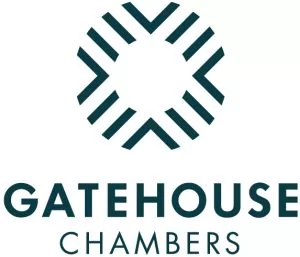These notes follow the #HardwickeBrew given by Lesley Anderson QC, Sarah Clarke, Gemma Witherington, Emily Betts and Joshua Griffin of the Hardwicke CDR Team on 30th March 2021 which looked at some of the practical issues resulting from recent changes to the regulations relating to witness statements used in the Business & Property Courts. All the information below was correct as at 30th March 2021.
Short introduction to the changes
- We are dealing with Practice Direction 57AC (the "PD") and the recent reforms to witness evidence at trial in the Business & Property Courts ("B & PC").
- The reforms apply to most but not all trials in the B & PC with effect from 6th April 2021 including in relation to existing cases.
- The reforms focus on 3 core aspects:
-
- First they are a restatement of the core purpose of witness statements (see paragraph 2 of PD) but you won't find much in the PD itself about the perceived problems which the reform seeks to remedy. For that, go back to the Report of the Working Group in December 2019 and the Implementation Report published 31st July 2020. Unlike other recent reforms in the area (for example the disclosure pilot reform), there was general acceptance that there were problems but equally the PD reflects the general view that ,whilst there was clear room for improvement, it was not necessary for there to be wholesale sweeping away of the existing regime.
- Secondly, a refocus on the necessary and appropriate content of witness statements (see paragraph [3] of PD and the Statement of Best Practice attached). The purpose is to set out in writing the evidence-in-chief that a witness of fact would give if they were allowed to give oral evidence at trial. Means one needs an understanding of what that is and, importantly, what it is not.
- Thirdly, the reforms deal with the issue of enforcement which in this context means the requirement and rationale behind compliance certificates (paragraph [4]) and sanctions (paragraph 5]). This is dealt with below.
- The main message is that much of what underpins the reforms is not new.
Dealing with documents in relation to preparing witness statements
- Paragraph 3.2 of the PD57AC requires witness statements to "identify by list what documents, if any, the witness has referred to or been referred to for the purpose of providing the evidence set out in their trial witness statement".
- The rationale behind this requirement is to assist judges in determining how much of a witness statement is derived from a witness's own recollection or from documents only seen after the fact: paragraph 44 of the Implementation Report. The more a witness statement is derived from a witness's recollection, the more weight the court is likely to give weight to it.
- What does this mean in practice?
-
- Witnesses should generally only be shown contemporaneous documents i.e. documents they would have seen or produced at the time. This excludes for examples the pleadings, other witness statements and documents a witness is likely to be shown in cross-examination.
- Witnesses can be shown documents prior to the interview, subject to the major exception of paragraph 3.7 of the Statement of Best Practice in relation to important disputed matters of fact.
- In cases where you are unsure whether a witness did in fact see a document contemporaneously, a sensible approach would be to follow a similar approach to paragraph 3.7 of the Statement of Best Practice (with an explanation, if necessary, in the body of the witness statement).
- The change to witness statements is likely to have a knock-on effect on trial in that it will reduce the time spent on cross-examination, and increase the time on opening/closing submissions: paragraphs 16 to 19 of the Implementation Report.
Interviewing the witness – questioning without leading
The new PD envisages that the principal way of producing evidence is by interview and then a statement drafted by the Legal Representatives. So the PD is clear that legal representatives can still draft the statement (Appendix 3.12), but that should be as a result of an interview which, the PD says:
- Avoids leading questions where practical;
- Uses no leading questions in relation to important contentious matters; and
- Use open questions as much as possible, generally limiting closed questions to requests for clarification of or additional detail about prior answers.
A few points to note in practice:
- Consider what the witness will/may have been told beforehand – to what extent is account 'influenced' already? Make sure the witness understands that they are to give you their account.
- Establish with open non-leading questions (first) the extent of their involvement/ (second) actual account of relevant matters. Use: "who, what, when, where, why, how" questions. The key point of distinction is that you are not putting an account to the witness, but getting their account.
- Check you have the witness's account by reviewing your draft to see if the witness is using their own words?
- Check for legal language/ using legal test – e.g. "I considered the contract was rescinded" – rather, what did the witness do/ say?
- Beware of follow up after the interview– sometimes a witness wants to go away and 'check' some points. What are they checking? Or who are they checking with? There is considerable risk the account gets tainted at this point, so take care.
Practitioners will note that it is not always possible or proportionate to have an interview with each witness. The PD recognises that other processes can be used e.g. questionnaire, exchange of emails, or where the witness prepares a first draft. In each case the statement needs to state the process (3.11) and follow the guidance (3.9) In particular the PD cautions that legal representatives should not propose new content for witness to approve, amend or reject (3.12). The key point is that it is the witness's account.
The impact on directions to trial generally
In addition to containing actual witness evidence, prior to the reforms, witness statements often served the following functions:
- setting out a narrative account of relevant events and explaining the client's case on the significance of certain documents, not only to the judge, but also the other side and your counsel
- formally introducing the documents exhibited as evidence on certain issues.
As a consequence of the reforms, we now need to think about those functions can be fulfilled.
The narrative account
- First point to consider – Is an additional narrative account necessary or helpful? If it is adequately dealt with on pleadings set this out you may not need elaborate. But in some cases, it may be very helpful to have a roadmap through the correspondence – particularly where there are simultaneous streams of correspondence in different formats (email and Whatsapp etc).
- When/how should the narrative account be provided?
-
- Should you build in to directions to trial a provision for each parties to exchange narrative statement? Or a joint narrative statement which identifies points of agreement and disagreement?
- Could this be done at same time as witness evidence/after experts/in advance of PTR/as part of trial preparation alongside bundles and skeletons?
- Can you wait for this to be dealt with in longer oral openings?
- These questions need to be answered both from the perspective of what would suit the advancement of your client's case, but also what you need to know about the other sides case
Putting documents in evidence
- What needs to be done to ensure docs are formally adduced in evidence when they have not been formally exhibited?
-
- The Chancery guide and QB guide are silent so it is probably safest to follow approach the Commercial Court guide.
- The Commercial Court Guide (paragraphs J8.6) notes that an agreement that documents included in trial bundle admissible in evidence does not mean those documents have been adduced in evidence. It requires parties to either agree and inform judge that documents are to be treated as being put in evidence or actively adduce by other means.
- At present there are no fixed procedures to deal with this point so it will be necessary to ensure the parties have agreed and approach, and that this has been approved by the court – if you have not done so before this will be an important point to be considered and determined at the PTR.
Costs Budgets
Consider the impact of the new regime on costs budgets:
- More time may be required, or different fee earners – this should be reflected in costs budgets;
- Explain your reasoning in your assumptions – this will help if the witness statement phase is contested at the CCMC.
Confirmation of compliance under paragraph 4 and applications to dispense with them (in particular certificate of legal representative)
Each witness statement needs to include confirmation of compliance with PD 57AC in two respects:
Firstly- the witness
The witness statement will be required to contain a statement signed by the witness confirming that they understand the purpose and proper content of a witness statement (PD 57AC, paragraph 4.1). This is in addition to the statement of truth.
The format of confirmation is set out in paragraph 4.1. The wording states:
"I understand that the purpose of this witness statement is to set out matters of fact of which I have personal knowledge. I understand that it is not my function to argue the case, either generally or on particular points, or to take the court through the documents in the case. This witness statement sets out only my personal knowledge and recollection, in my own words.
On points that I understand to be important in the case, I have stated honestly (a) how well I recall matters and (b) whether my memory has been refreshed by considering documents, if so how and when.
I have not been asked or encouraged by anyone to include in this statement anything that is not my own account, to the best of my ability and recollection, of events I witnessed or matters of which I have personal knowledge. "
It is worth nothing that no certificate is required if the party relying on that statement was a litigant in person at the time the witness statement was signed, provided that they were not acting in person to avoid the requirement (PD 57AC, paragraph 4.4).
Secondly- the legal representative
The witness statement needs to be endorsed by a certificate of compliance with PD 57AC signed by the "relevant legal representative" confirming that they have explained the purpose and proper content of a witness statement to the witness, and believe that the witness statement complies with PD 57AC and paragraphs 18.1 and 18.2 of PD 32.
The "relevant legal representative" is someone who is authorised to conduct litigation and has responsibility for ensuring that the purpose and proper content of a witness statement have been explained to and understood by the witness.
The format for the certificate of compliance is set out in paragraph 4.2 and states as follows:
"I hereby certify that:
- I am the relevant legal representative within the meaning of Practice Direction 57AC.
- I am satisfied that the purpose and proper content of trial witness statements, and proper practice in relation to their preparation, including the witness confirmation required by paragraph 4.1 of Practice Direction 57AC, have been discussed with and explained to [name of witness].
- I believe this trial witness statement complies with Practice Direction 57AC and paragraphs 18.1 and 18.2 of Practice Direction 32, and that it has been prepared in accordance with the Statement of Best Practice contained in the Appendix to Practice Direction 57AC."
This is likely to be a real concern for many solicitors as it places a serious obligation on the individual. However, bear in mind that legal representatives are required to certify compliance to the best of their belief, and not compliance as a matter of fact. Therefore, provided there is a reasonable basis for their belief, and they have made appropriate enquiries about how the statement was prepared and have received satisfactory answers, they should not find themselves in difficulty if their belief proves to be wrong.
It is understandable that legal representatives have concerns about the effects of getting this wrong or errant witnesses blaming them when things go wrong. It remains to be seen whether we will see an increase in wasted costs applications and orders for sanctions being made.
Dispensation
Permission is required to vary or depart from the certificates of compliance set out above (PD 57AC, paragraph 4.4). This is intended to promote transparency. If there is an issue that means a certificate cannot be signed, then the court needs to know what it is. A decision can then be taken as to how that affects the approach and weight of the evidence.
A few final thoughts
- This reform to witness evidence should be seen as part of ongoing reform to the conduct of litigation in the B & PC. It seems to be widely acknowledged that there is still a wider conversation to be had (touched on only lightly in the Hardwicke seminar) about whether the current process to trial and conduct of the trial in B & PC is fit for the 21st Century, a conversation which was reflected amongst other things in the paper delivered by Zacaroli J to the Chancery Bar Association in January 2019. Amongst issues for discussion remain the balance of trial time allocated to witnesses and oral testimony when 90% if not 99% of issues are proved by the documents (and where what the witness has to say on what the documents mean is inadmissible); how best to educate the Judge about the documents and what the parties say about them and creative carving up of time at the trial itself (and anticipated by directions at say the PTR).
- This reform is largely about restatement of the core purposes of evidence-in-chief. The problem perceived is a collective memory lapse about the true scope and purpose of that evidence-in-chief.
- At its heart, this reform is part and parcel of the core questions we as litigators engage in daily: what do we need to prove and how are we best going to prove it?
The content of this article is intended to provide a general guide to the subject matter. Specialist advice should be sought about your specific circumstances.




